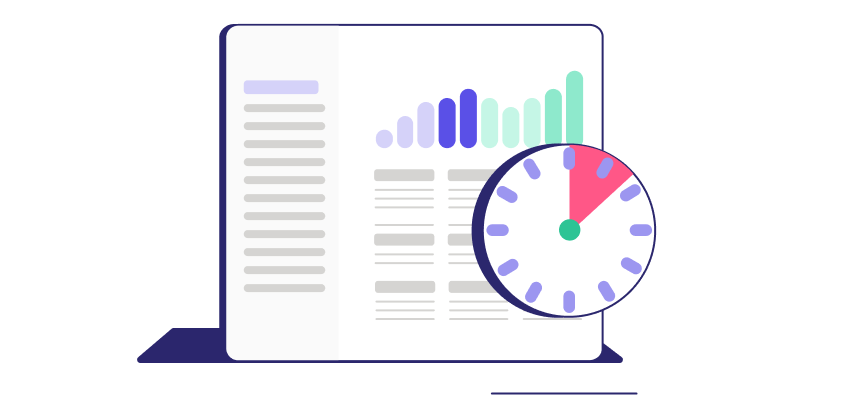Sales tracking: 8 tips and tools for small businesses
If you’re not actively tracking sales, you’re almost certainly leaving money on the table.
Missed follow-ups. Unsent proposals. Inaccurate forecasts. These issues are easy to overlook when you’re juggling clients, operations, and admin, but they can quietly slow down growth or stall it altogether. Without visibility into your sales pipeline, it’s hard to know what’s working, what’s not, or when to take action.
The good news is you don’t need to overhaul your entire business to improve your sales tracking. A few simple tools and consistent processes can help you stay organized, spot opportunities, and make faster, more informed decisions.
Whether you’re a solopreneur or leading a small team, the right systems can help you maximize revenue and scale with confidence.
Key takeaways:
- Set growth-oriented sales goals and track key metrics to stay focused and adjust sales efforts as needed.
- Centralize your sales tracking system to avoid missed opportunities and reduce reliance on multiple disconnected tools.
- Standardize and simplify your sales process with automation and templates to save time and scale more efficiently.
- Review sales data regularly to identify what’s working and where to improve.
- Connect sales with onboarding for smoother handoffs and a better client experience.
1. Set clear sales goals and metrics from the start

Clear sales goals and the right metrics can make all the difference for your business. Defined targets, like a certain number of deals or a specific conversion rate, make it easier to see whether your sales strategy is working.
But what does success look like for your business? It might mean gaining five new clients per quarter, increasing average project value, or improving client retention by a set percentage. Whatever your focus, make sure your goals are measurable and tied to meaningful outcomes.
Choose key performance indicators (KPIs) that align with where your business is today and where you want to go. A growing firm might prioritize qualified leads or win rates. A more established business might shift toward tracking revenue per client or project profitability.
Regularly monitoring your progress helps you understand what’s working and when it’s time to pivot. A strategy that delivered results last quarter might fall flat this time around. Markets change. Client needs shift. The best way to stay ahead is to check in often and adjust your sales efforts accordingly.
Growth isn’t just about setting goals—it’s about staying flexible enough to evolve them.
2. Implement a simple, scalable sales tracking system
Tracking sales effectively is essential for any growing business. But not every sales team needs a complex system to stay on top of deals. Spreadsheets might work in the beginning, but they quickly become time-consuming and error-prone. Manual updates and disconnected data across lead generation and sales activities can make it hard to get a clear view of your progress or your pipeline.
That’s where a customer relationship management (CRM) system or similar sales tracking tools can help. CRMs are ideal for managing deep contact histories and complex nurture sequences, especially for larger companies.
But for small businesses, simplicity drives success. Ignition offers an all-in-one platform that streamlines the entire sales process, from lead capture to signed proposal to payment. No switching between tools or chasing data across platforms.
Everything stays in one place: proposals, billing, payments, and client communication. Pipeline values update as clients sign or pay, turning forecasted deals into real revenue and simplifying sales pipeline management.
Ignition also supports CRM tools for enhanced sales tracking, offering time-saving automation, detailed reporting, and flexible customization to match your evolving business needs.
While CRM software solutions work well for enterprise-level operations, Ignition gives small firms and agencies exactly what they need to stay productive and profitable. It’s a sales tracker and business launcher rolled into one.
3. Standardize your sales process
A standardized sales process is one of the most effective ways to boost efficiency and improve results, especially for professional services businesses. When every lead follows the same workflow from inquiry to signed contract, it becomes much easier to track progress and benchmark performance over time.
Consistency also gives you cleaner, more comparable data. You’ll see which steps drive conversions, where clients tend to stall, and which follow-ups actually move deals forward. That kind of visibility is hard to get when every team member takes a different approach.
Templates are a simple but powerful way to create consistency. Standardized proposals and contracts save time and ensure a professional experience for every client. Ignition supports this with customizable proposal templates that match your brand and services. You can send proposals in minutes—not hours—and know everything looks polished and on point.
When your sales process runs like clockwork, you’re better equipped to scale and keep clients moving forward. Tools like Ignition help you save time and build a foundation for smarter, more sustainable growth.
4. Centralize proposal, lead, and deal tracking
When proposals, leads, and deals are scattered across Microsoft Excel spreadsheets and disconnected apps, it’s no surprise things fall through the cracks. Manual data entry, missed follow-ups, and unclear statuses all slow down your sales process—and can cost you valuable revenue.
Centralizing everything in one system reduces that risk. It cuts down on manual work, keeps your data clean, and gives your team visibility into what’s happening at every stage. Real-time insight into deal status and customer interactions helps you move faster and make more informed decisions.
Ignition brings it all together in one streamlined platform. From lead capture to signed proposals and payments, your sales process lives in one place. With Deals and Forms enabled, you can embed a lead capture form on your website or share it via email or text. Each response instantly creates a new lead in your Deals pipeline, ready for follow-up.
This connected workflow gives you clearer oversight and a more accurate picture of revenue in progress. No more bouncing between tools or guessing what comes next. Ignition helps you stay in control and keep your sales pipeline moving forward.
Looking for a better way to keep track of your sales?
Streamline your entire sales process with Ignition.
5. Lean on automation solutions for routine admin tasks
Are routine admin tasks quietly eating up your time? Manually creating proposals, chasing follow-ups, and waiting on signed contracts can slow your sales cycle and pull focus from nurturing leads.
Automating these repetitive tasks (like proposal creation, follow-ups, and e-signatures) reduces the risk of human error and keeps your process running seamlessly. It also saves time and helps advance deals without unnecessary delays.
Ignition supports this with smart templates and built-in workflows. You can generate proposals with service details and pricing in just a few clicks. Client activity triggers follow-ups automatically, so fewer decisions fall on your plate.
It’s easier and faster for clients to view, sign, and pay, all through a single link. That means less back-and-forth and quicker turnaround times, which directly improves customer satisfaction. With automation in place, your team can focus on what matters most: turning leads into loyal clients.
6. Review and analyze sales data often

As a small business owner, one of the smartest habits you can build is regularly reviewing your sales data. Whether it’s weekly, monthly, or quarterly (depending on your business size), this routine helps you stay informed and ready to act.
Data shows what happened and helps explain why. Identifying trends, spotting bottlenecks, and uncovering key patterns allows you to make smarter decisions and plan for growth with more confidence.
Look beyond total sales numbers. Track performance by source, sales rep, product or service, and region. This level of detail helps you refine your strategy by seeing which parts of your sales funnel perform best and where prospects tend to drop off.
When every lead and deal matters, detailed pipeline visibility becomes essential. It helps you forecast with accuracy and respond faster to changes or opportunities.
Strong sales performance isn’t just about hustle—it’s about insight. Make it a habit to review your sales and customer data often to keep your business moving forward.
7. Align sales with your client onboarding process
Closing a deal is just the beginning. The real magic happens when your sales process flows seamlessly into client onboarding. A smooth handoff sets the tone for the entire client experience and helps your team deliver value faster.
Tracking key milestones during this phase ensures nothing gets missed. Automating the transition reduces friction, keeps everyone aligned, and saves time for both your team and your clients.
Ignition helps bridge that gap. Once a proposal is signed, the deal moves to the closed stage of your pipeline. Billing kicks off as soon as work starts, keeping momentum without any manual intervention.
Once a deal is marked as closed-won, you can immediately send a tailored onboarding form from the deal card or client record. With Ignition, sales and service delivery stay in sync, creating a faster, more professional experience from day one.
8. Keep your sales tracking system up to date
A reliable sales pipeline starts with accurate, up-to-date data. Without it, sales forecasting becomes guesswork, and it’s harder to make informed decisions about growth.
Start by assigning clear ownership. Someone should be responsible for updating each stage of the pipeline. Make it a habit to review and revise deal statuses regularly, especially after client conversations or key milestones. Keeping notes detailed and consistent helps prevent confusion later on.
Ignition simplifies the process. Pipeline stages update when proposals are sent or accepted, and payments sync in real-time—giving you an always-current view of what’s closed and what’s been paid.
Integrations with Xero, QuickBooks, and Zapier help keep everything aligned across your broader tech stack. No duplicate entries. No missed updates.
With less time spent on admin and more confidence in your numbers, you can focus on the work that moves your business forward. That includes everything from strategic selling to seamless project management and client delivery. Ignition keeps your sales tracking system clean, current, and ready to scale.
Simplify sales tracking and grow with confidence using Ignition
Simplifying your sales tracking isn’t just a time-saving move—it’s how small businesses turn leads into lasting revenue. When your pipeline is visible and organized, decision-making becomes clearer, follow-ups are more effective, and growth becomes more achievable.
Ignition combines proposal creation, pipeline tracking, automation, and real-time revenue insights in a single platform. With connected workflows and a live dashboard, you’ll have everything you need to streamline your sales process and scale with confidence.
Seamless sales tracking for your small business.
Try Ignition free to manage proposals, track your pipeline, and make better decisions.


